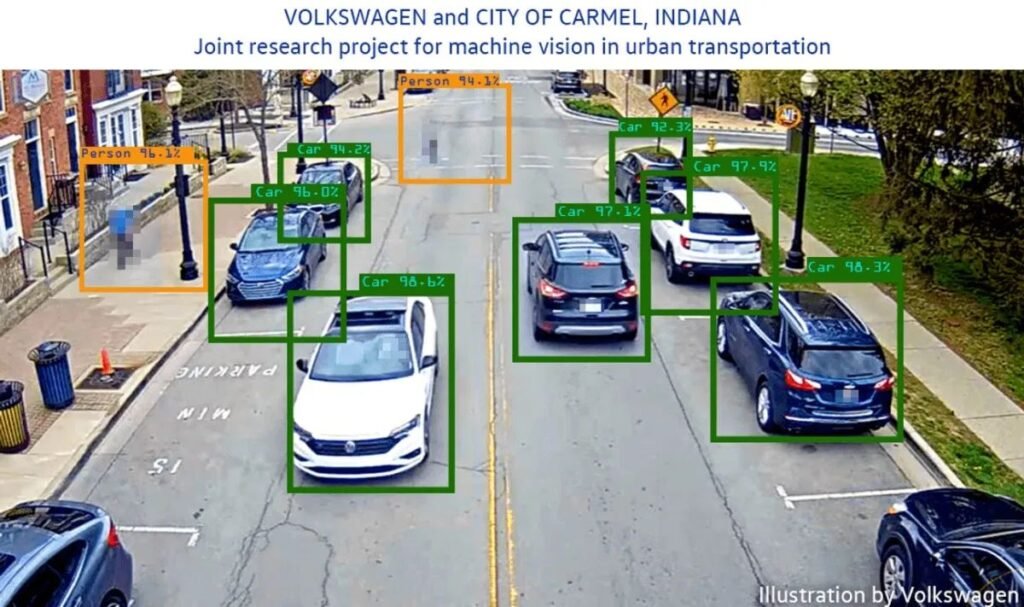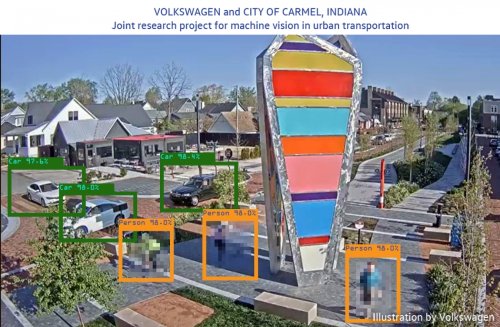When we think of cars and computer vision, the obvious applications are all on the car. Lane sensing, obstacle sensing, and seeing other cars enables driver assistance, and eventually autonomous vehicles.
But what if someone did the opposite, and enabled the road to see the cars?

That’s exactly what Volkswagen and the municipal government in Carmel, Indiana, are doing. Their program will catch rich data that governments can do a lot more with.
The cameras installed by Volkswagen will automatically blur out people’s faces and their license plates, so nobody’s individual movements can be tracked using the system.

Instead, they simply count how many parking spaces are being taken up, how many people drive in each lane, and how many pedestrians there are and where they walk.
This all helps with routine planning needs, so that new building goes where it’s needed most.

For everything from small accidents to major disasters, the camera data can generate important information. By sending the right resources for what’s actually happening on the ground, lives can be saved. With this software one can more easily expand the view of traffic flow throughout the city.
This better data will be available through a dashboard that the city can access to get both long-term data as well as instant snapshots.
The biggest benefit of this technology from Volkswagen is that scarce resources can be targeted for where they’ll have maximum effect on improving life in the places being analyzed.

This can also help free up funds for more impactful projects, so everyone can come out a winner on this, at least in theory.
It may also save lives by helping with not only incident response, but also other phases of emergency management like mitigation and planning.
In other words, some serious analysis needs to go into making sure that this Volkswagen analysis programs don’t amplify disparities rather than help solve them.
Reference- Volkswagen Online Newsroom, Clean Technica, Inside EVs, Reuters






